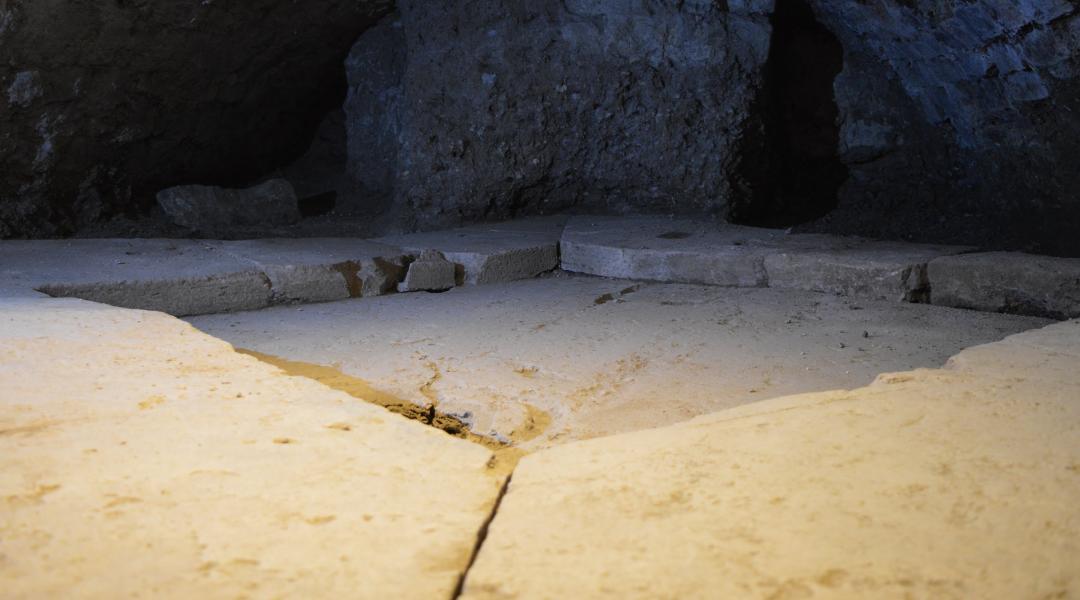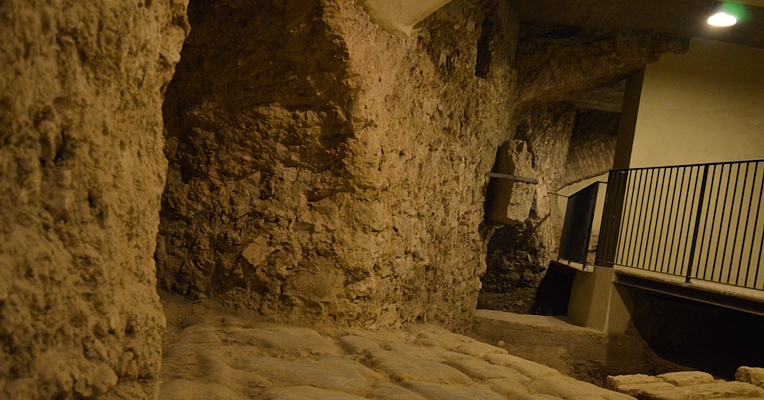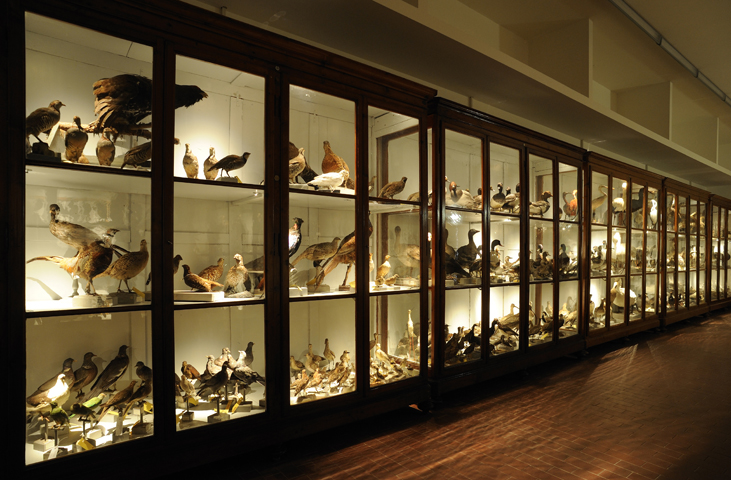Underground Perugia
A stone treasure chest where ancient civilisations, great works of Etruscan engineering, highlights of Roman life and medieval papal intrigues intertwine.
In the heart of Perugia's historic centre, a path leads to the discovery of a hidden side of the city: Underground Perugia, located within the Isola di San Lorenzo complex, adjacent to the Cathedral of the same name.
In this area stood the ancient acropolis of the city, initially Etruscan and later Roman, the vital centre of the ancient city. Archaeological finds have identified the sacred area of the city, as evidenced by the presence of a temple dating back to the 6th century BC, probably dedicated to the goddess Uni, the Roman Juno, and the remains of another sacred building dating back to the 2nd century BC.
Over the centuries, the acropolis was transformed into an underground site that, after being brought to light again, offers a fascinating journey to discover the architectural evolution of the city of Perugia.
Etruscan and Roman Perugia
The underground route begins in the Etruscan city, where the remains of the ancient road destined to become the decumanus of the Roman city can be admired. The road intersected the cardo maximus, which entered the city from the Etruscan Arch and reached Porta Marzia, right where the Cathedral stands today, creating the perfect centre of ancient Perugia at this point. Given its importance, the street must have been among the busiest, as the marks left by the passage of carts on its paving stones still show today.
Further evidence of the life that flowed in this place is the presence of a Roman domus from the 1st century BC, built in a privileged position near the decumanus and thus belonging to a very important family of the aristocracy of the time. Of the house, it is still possible to admire the impluvium, the basin for collecting rainwater, and the earthenware floors.
However, the marks left by a fire on the domus also tell of a dramatic moment for Perugia, when the city found itself at the centre of the clash between Mark Antony and the future Emperor Augustus. During the Bellum Perusinum, in 40 BC, a fire destroyed the city conquered by the future emperor Augustus, the same emperor who imposed the inscription “Augusta Perusia” on the city's main gates, such as the Etruscan Arch.




























.jpg/7c1a2dc4-3986-52b2-a853-2affab4017e0?width=780)
.jpg/53c7c378-8c12-cbd6-481e-7946513a6453?width=780)
.jpeg/8031dd9b-06c7-4ac1-a77b-86e1376416b6?width=780)



.jpg/57eda7af-f14d-d05d-f11c-d1cdb56c5f9f?width=780)
.jpeg/0d7d918e-eddd-ed4c-9da2-23a6917261f0?width=780)
